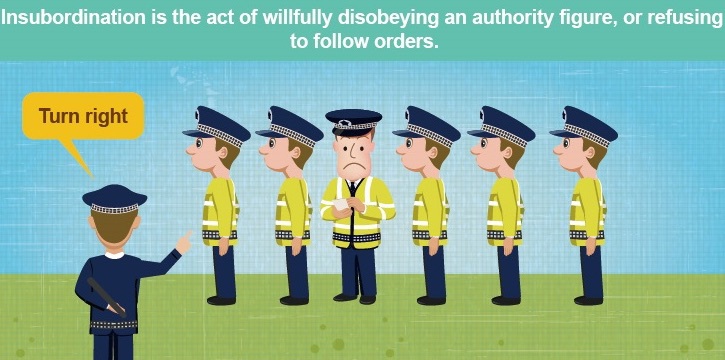You will hear and be told again and again that the hardest part of human resource management is employee termination. Most management guides and experts advocate for employee retention and even encourage managers to do everything possible to retain employees in their organization.
While this is a good course, sometimes employee termination can be inevitable. In this pretext, various reasons can lead to the termination of employment. These reasons range from misconduct, performance and sometimes economic recessions and other crisis.
The section below will highlight and explain the various reasons for employee termination in organizations.
Table of Contents
Various Reasons for Employee Termination
1) Incompetence
Every organization wants to harbour excellent performance and a high level of productivity. Therefore, when an employee showcases poor performance and even after several warnings do not show any improvements, termination is often considered as the only action appropriate for the situation.
As a manager, you should never encourage poor performance in your employees, stand your ground that every employee must show competence in their line of work. If you find that an employee is incompetent, then firing is very much allowed and essential. It will help other employees realize the seriousness of the job and also up their sleeves to avoid facing the same disciplinary action.
Nonetheless, during the termination of employment, ensure that the employee knows and understands why he/she is being fired. You should also make them understand that as an organization you have tried to make them improve, but it seems they won’t and thus needs to find a suitable job where they can showcase their full potential.
This way you will avoid criticism, litigations, and liabilities as a result of misunderstood termination.
2) Misconduct
Misconduct, as we all understand, is unacceptable behaviour at the work place. While there are different levels of misconduct, gross misconduct at work often leads to immediate termination of employment.
Most organizations foster good ethical and moral values among employees. And when one is found to be verbally abusive, engaging in violence or stealing organizational property, such a person should be dismissed without hearing.
Like poor performance, misconduct should never be encouraged in any organization. Once a gross misconduct is discovered, it should be dealt with severely and immediately. Failure to punish misconduct has the effect of reducing employees’ expectations of what represents acceptable behavior.
And once you defer action on misconduct cases, it makes it harder to impound the punishment later on-especially when the bar of acceptable behavior is lowered.
3) Insubordination
Above is a perfect image from legaldictionary.net. The reason why banks are established in organizations is to create and maintain order. It is therefore expected that employees obey orders and also respect those in authority. Insubordination as one of the reasons for employee termination is often misunderstood.
Employees may interpret the dismissal as a show of might, unfair or even discriminatory and can even lead to law suits between an organization and the worker in question.
Regardless of the challenges that come with firing due to insubordination, you should never condone employees who cannot follow orders, rules and even guidance on how work should be done. If one can’t follow the company’s policies nor respect those in authority, there is no reason to retain them at all. In short, termination is justified.
4) Tardiness
Tardiness occurs when an employee repeatedly reports for work after the scheduled time. If you are the type of manager that subscribes to the ‘better late than never’ notion, then your success as a manager and even that of your organization is very limited.
I understand that dealing with tardiness is challenging especially since employees always have reasons and excuses for coming to work late. Some reasons can be considered but when the behavior is recurring, then an investigation should be prompted, and disciplinary action was taken.
You need to let your employees know and understand that they must show up and that they must show up on time. Otherwise, you are not functioning as an organization. If you allow tardiness, other employees will find it okay and follow in on the behaviour, and you will lose control as well as discipline. In return, sales, customer service, and even the organization’s name will be affected-I doubt this is what you want.
Therefore, wise up as a manager and make your policies consistent and strict when it comes to employees showing up late for work. Address any issues of tardiness with caution and with seriousness.
When the behaviour is found to be consistent, issue a verbal or written warning, when appropriate, and work with the employee to find a solution. Keep records of any conversations you have with him or her, and maintain a copy in their personnel file. In case their behaviour doesn’t improve, take action by terminating them and use the files as evidence.
5) Absenteeism
Absenteeism in an organization occurs when a member of staff repeatedly fails show up to work without a valid excuse. And like tardiness, absenteeism is hard to handle similarly because of employees’ creativity at coming up with excuses.
However, as manager, you can easily distinguish between an honest reason and one that is not. For example, the frequency and similarity of excuses can make you doubt the sincerity of your employees when they report absent for work. You should thus try to reform them, and if it proves to be impossible, then you have the right to boot them out of the organization as incompetent.
To wrap up,
All these are behaviours that if not addressed properly can affect your organization negatively. The5reasons for employee termination listed here can impact your organizations’ effectiveness, risk the reputation of your employees as well as the organization’s, reduce profits and also hurt the morale of other employees at work.
You, therefore, should terminate employees who pose any of the above behaviours. Just remember to conduct the termination process the right way – following the established policies and procedures for communicating your concerns and documenting every step that you take along the way.
Liked this post? Check out the complete series on Human resources


